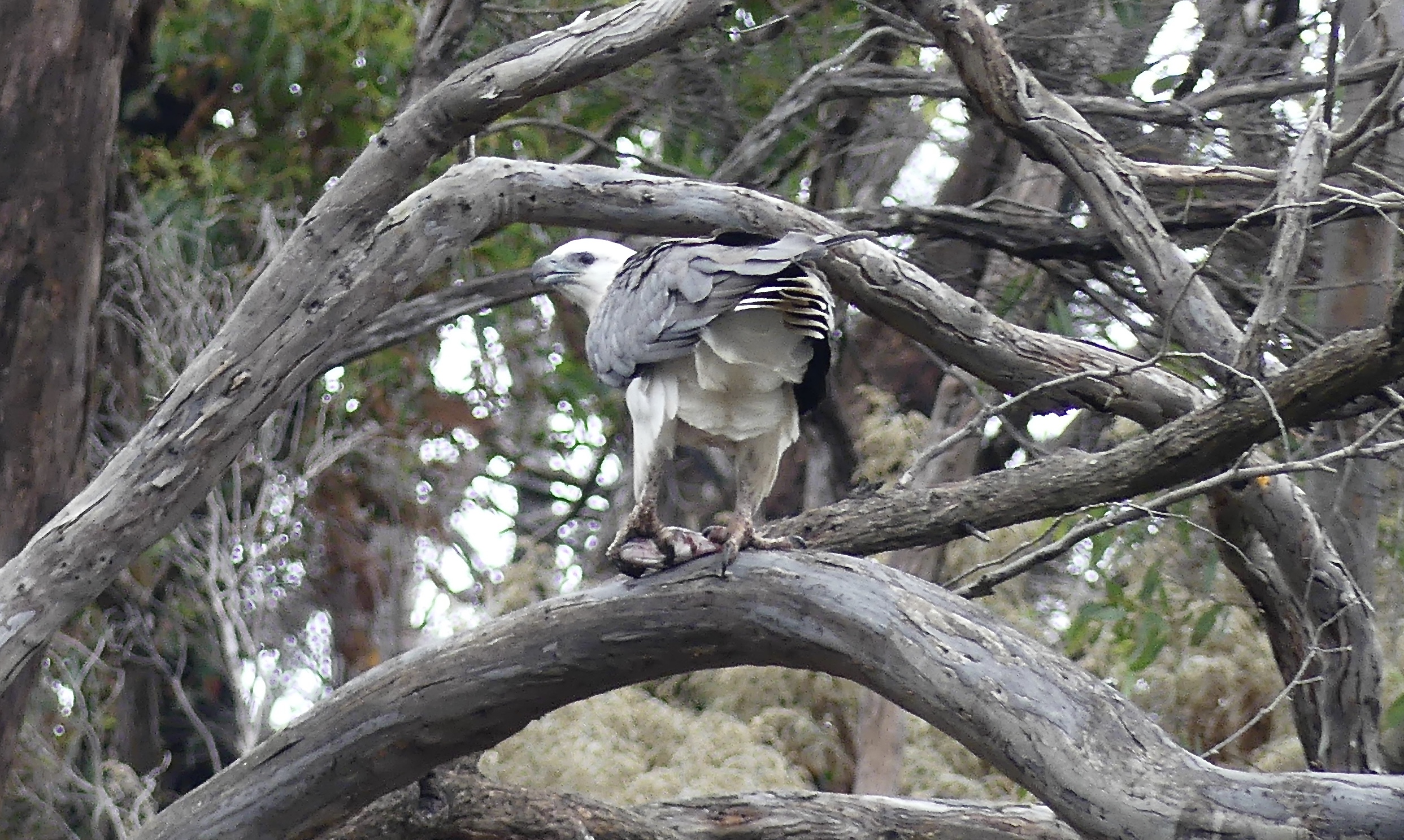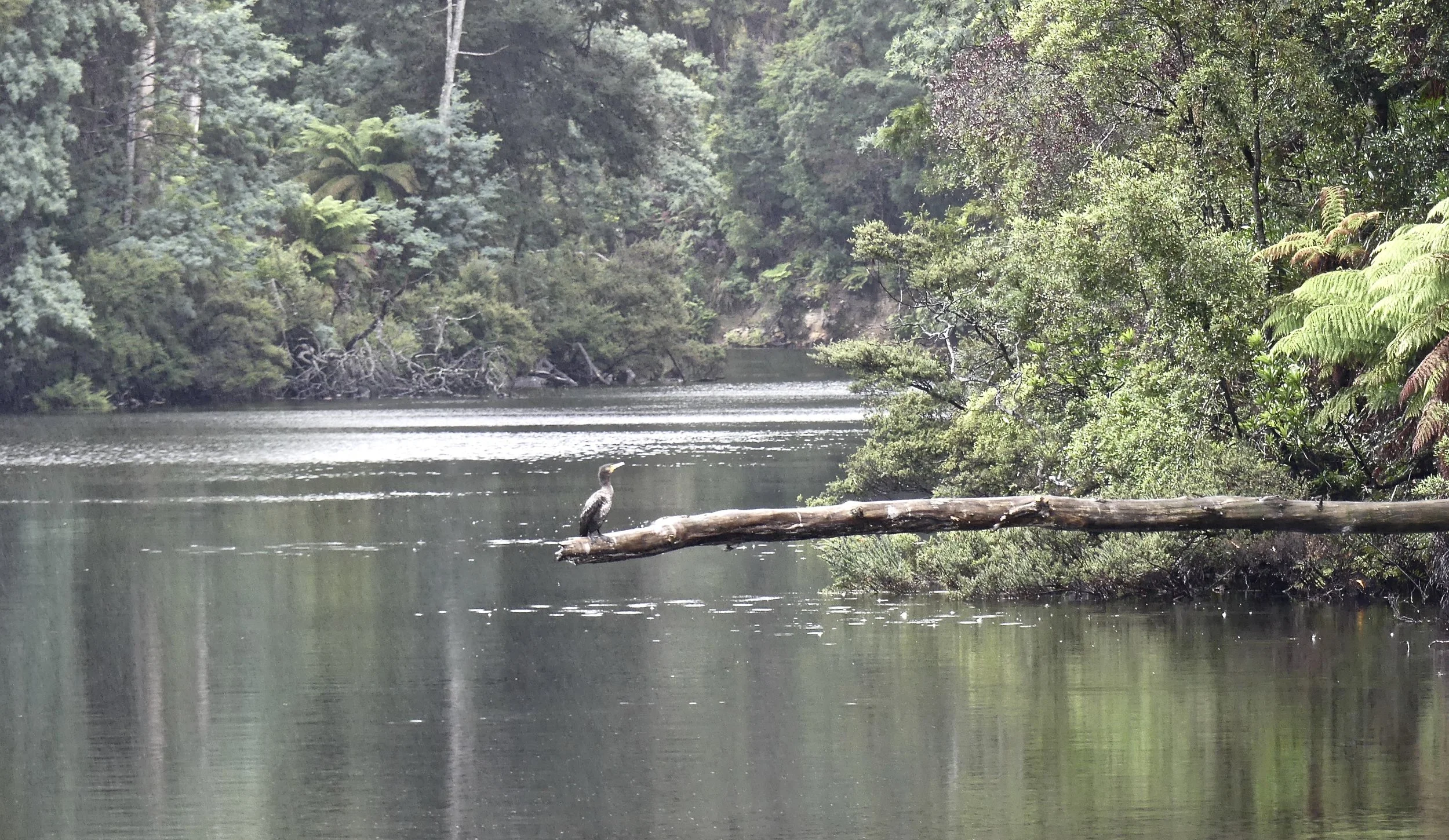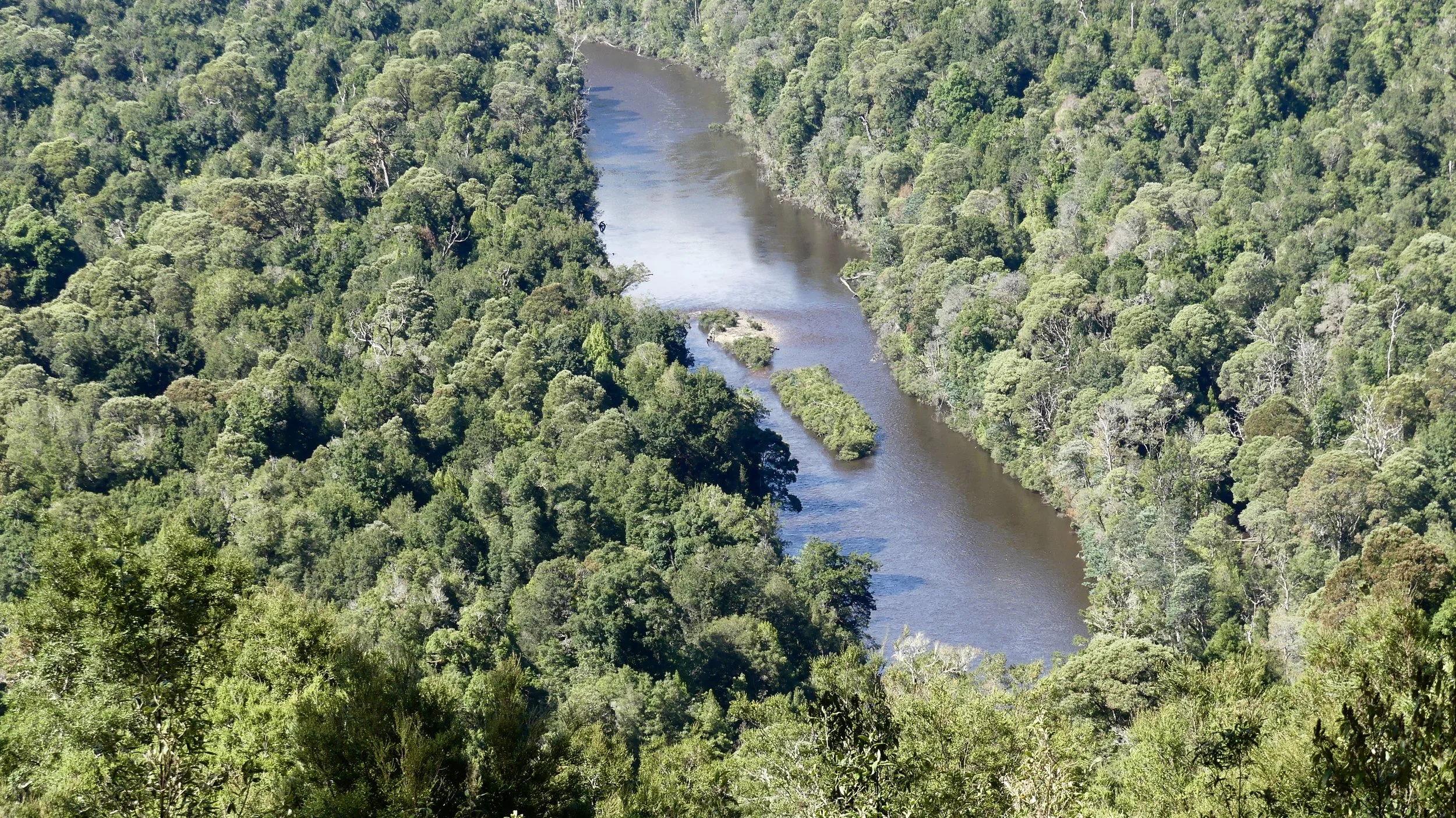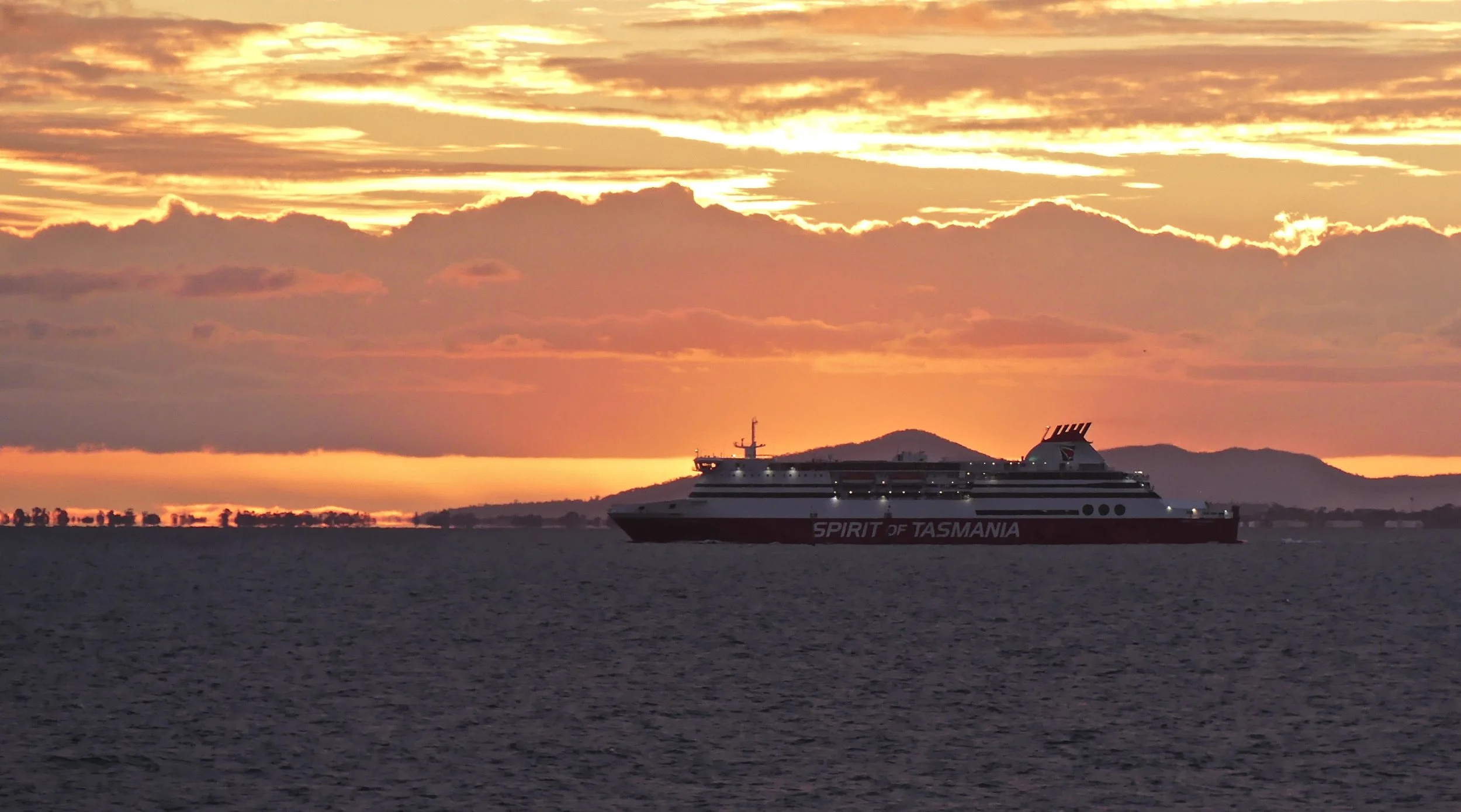The Arthur River
The Arthur River is Tasmania's most pristine river, flowing through the Tarkine Wilderness to the rugged west coast. It has never been logged, dammed, or used as a penal colony; there are no farms in its catchment; and both White-bellied Sea Eagles and Wedge-tailed Eagles claim territory above its winding course. It is a wild river in every sense of the word.
The Arthur rises in the Magnet Range near the old tin mining town of Waratah* and Savage River National Park, the largest undisturbed area of cool temperate rainforest in Australia and inaccessible to the public: there are neither roads nor facilities. I mention this not because I have been anywhere near the Savage River but because even its name gives you an idea of the remoteness of northwest Tasmania's inhospitable interior. There may even be tigers for all we know.
The Tarkine Forest Reserve is known for the large number of ecosystems for its size – roughly 450,000 hectares.
The Arthur flows 172 kilometres to the point where it fights its way into the Southern Ocean at the Edge of the World, battered by roaring westerlies, enormous seas and ancient log debris washed down Tasmania's western rivers during fierce storms. We sailed 14 kilometres upstream on a funny old red boat, MV George Robinson, from the hamlet of Arthur River, which is an hour's drive from Smithton, 70 minutes from Stanley, and roughly an hour and 20 from Rocky Cape where we were staying.
More than 30 years ago, a local man, Turk Porteus, began building the boat in his backyard to enable him to share this magnificent River with others, and in 1985 Arthur River Cruises was founded. It seems extraordinary today that he was able to get a lease for a landing stage at the junction of the Arthur with its tributary nearest the ocean, the Frankland. Without it, of course, I wouldn't have been able to walk on the wild side deep in the forest. The cruises are now run by Greg and Lesley, and what they don't know about their beloved River isn't worth knowing.
Just like when we sailed up the Gordon River from Strahan, the sky was heavily overcast and at times it teemed with rain, ruining the reflections but enhancing the drama of remote cruising.
Scrubby coastal heath typical of Tasmania's western coastal fringe soon gave way to wet sclerophyll forest in which a high eucalypt canopy diminishes light and keeps in moisture. Species in the mid-layer are adept at capturing light and flourish in the gloom. Beneath them, in the ground storey, are magnificent ferns, tree ferns and vines that make the forest so impenetrable. Plentiful rainfall sustains this vast amount of vegetation. Further up the river still is cool temperate rainforest that includes Brown Top Stringybark, Myrtle, Blackwood, Leatherwood and Sassafras.
Rocky riverbanks deterred settlement and other development
This is a 3-metre-tall White-bellied Sea-Eagle's nest: there are three of them along the Arthur. Remarkably, the nest is 47 years old and as steady as a rock, despite 120-130 km/h winds during the Tassie winter. Every year the Eagles build it a little higher. They can live 30-40 years.
One pair came to collect fish thrown from the boat; well, the female collected while her partner demurred. Greg told us the male was older and gladly let his other half take charge. I don't think Greg, a sprightly 70-year-old, was too impressed with this state of affairs. Lesley, in charge of fish treats, limits the birds to one fish a day. I don't believe wild animals should be fed at all in order to entertain tourists, but it's unlikely we would have seen such Sea-Eagle action otherwise.
We also saw a pair of Wedge-tailed Eagles wheeling higher above the River upstream, but they didn't come close. Our bird book (Michael Morcombe's Field Guide to Australian Birds) says Sea-Eagles often venture inland along major rivers: Wedgies are found nationwide. Morcombe describes both species sometimes soaring together, but Greg spoke of fierce competition for territory along the Arthur.
We spotted stunning Azure Kingfishers; and the presence of Cormorants indicated there must be fish. On the Gordon the lack of birdlife was partly attributed to the depth of the river and poor accessibility of fish for divers.
We moored at Turks Landing. Lesley prepared a barbecue while Greg walked us through the dank forest. He identified Myrtles, the dominant tree around the Landing. Some are believed to be 500 years old. Myrtle doesn't burn well, Greg explained, so it's safe to assume that the last wildfire through here was at least 500 years ago. Brown Top Stringybarks – commercial name Tassie Oaks – grow up to 90 metres tall, with a girth of up to 16 metres. They have a lifespan of 300 years. Greg pointed out Silver Wattle, Blackwood and Leatherwood, from which Tasmania's delicious honey is produced. He explained it has the most beneficial medicinal properties of all honeys. He showed us Rough Tree Ferns, or 'Lady Ferns', and 'Man Ferns' (their Latin name is Dicksonia antarctica, you see?), the most common tree fern in Tasmania, and described the characteristics of each. Man Ferns grow less tidily although they are more resilient, in fact they're almost indestructible: Lady Ferns are more beautiful to look at. I'll leave you to guess which is which below.
The Brown Tops were impressively straight and tall.
At one point a Kookaburra laughed. Greg explained they are not native to Tasmania and have only been around for 25 years or so in any numbers. (They were introduced originally to reduce snake numbers, I've since read.) And Currawongs rule along the north coast of the island, not Maggies. Bird numbers are reduced generally by fewer insects in Tasmania. The upside of this is the reason the state's timber is so highly prized: no termites.
It was still raining or, at least, big drops were falling from the canopy. Even the camp wallaby was looking bedraggled. We sat and ate beneath a large sail shade and compared notes about our Tassie travels.
By the time we returned to the boat the damp was chilling to the bone. I hadn't had enough of the forest depths, however, and would have preferred to venture further up the narrowing Arthur as it turned north, this-a-way…
…or explore the less-well-known Frankland, heading south at the T-junction, that-a-way.
As we cruised back, Greg asked the ladies if anyone wanted to take the helm. I did. Once you got the feel of the vessel's weight and how far you had to turn the wheel for the boat to respond, it was most enjoyable. Just before the last bend the sun finally put in an appearance.
It was a privilege to journey along this pristine River. Once in a while, the opportunity to appreciate a special place seems like an honour as well as an enormous source of pleasure. Drifting in Byron Bay alongside a Humpback Whale; flying low over the Channel Country; and snorkelling off the Great Barrier Reef – in the old days, pre-bleaching – are other occasions that come to mind.
If you're planning a trip through western Tassie and have to choose one wild river to explore – the Gordon River from Strahan or the Arthur – I would agree with a dear Brissie friend of mine and recommend The Red Boat every time. Less polish but you'll learn more.
I couldn't head back to the cabin before I'd stood once more on the Edge of the World and pondered the many thousand kilometres of uninterrupted ocean between here and Argentina.
* Waratah is the name of a beautiful crimson flowering native shrub and, unfortunately, also a coal-mining arm of Clive Palmer's Mineralogy company






























